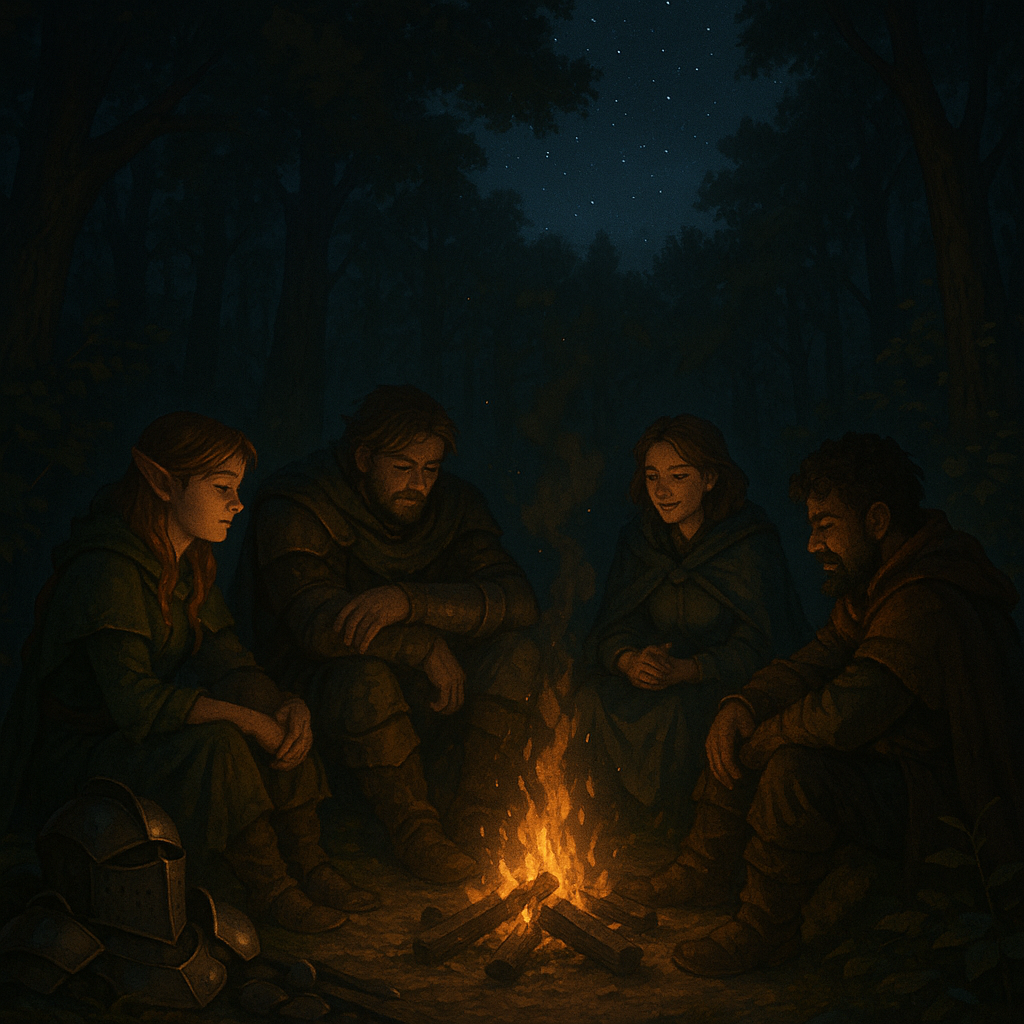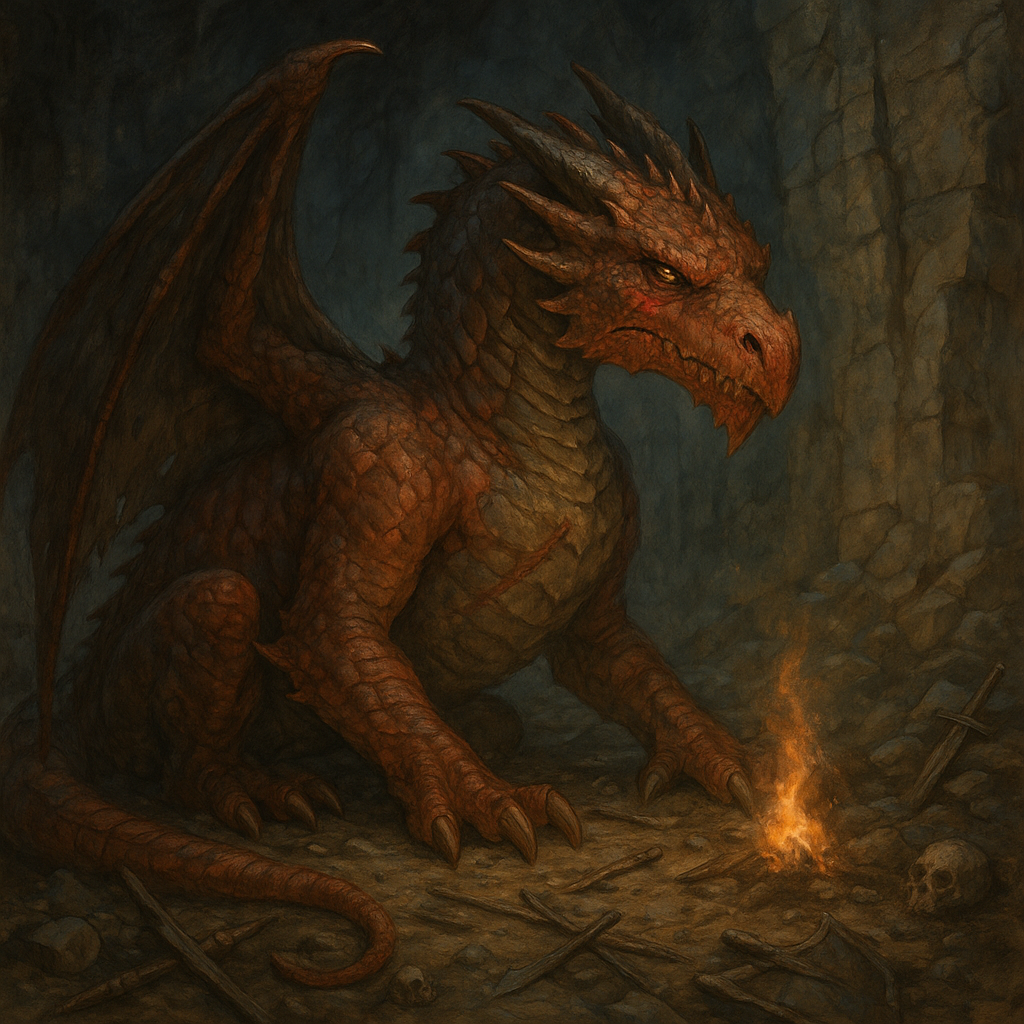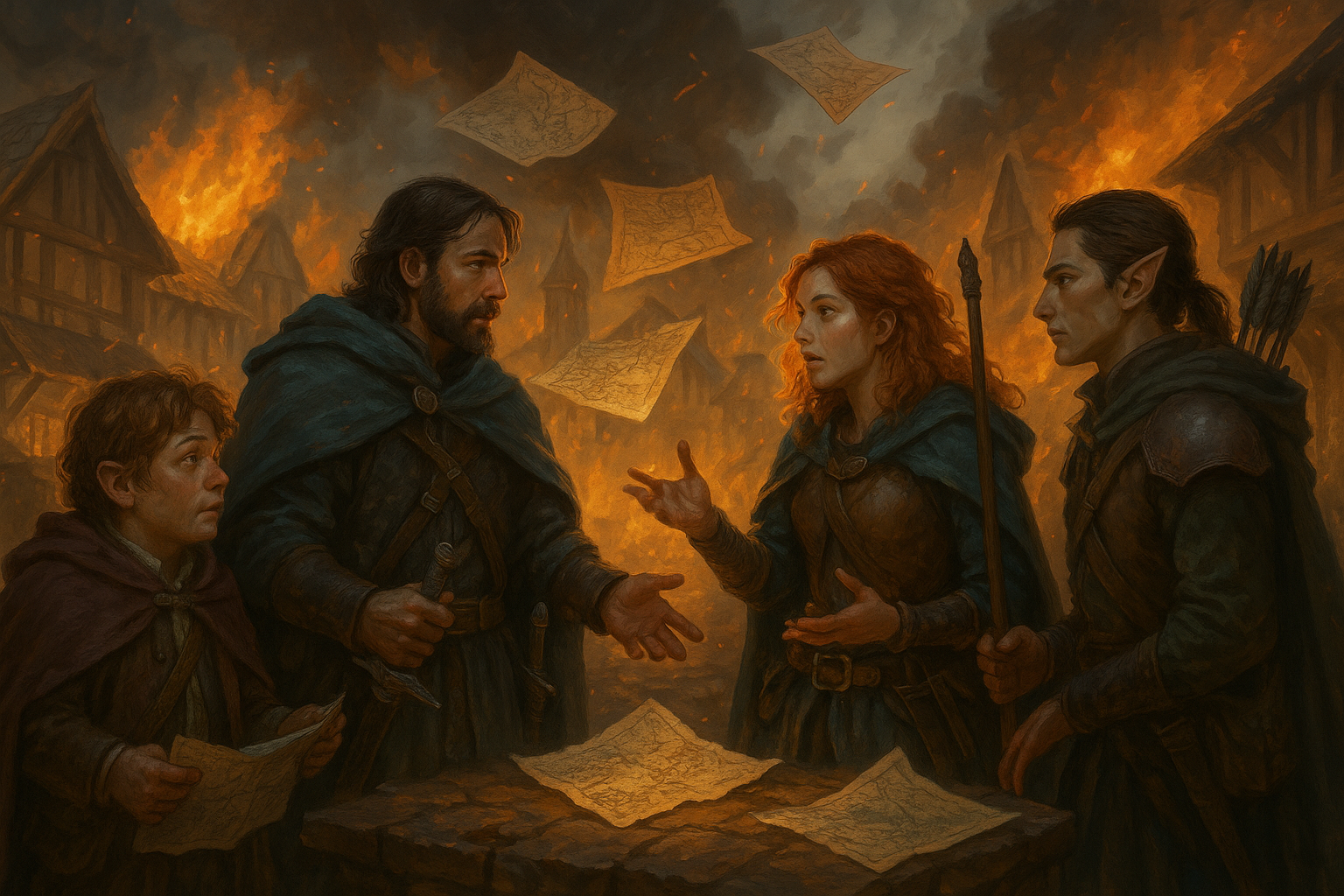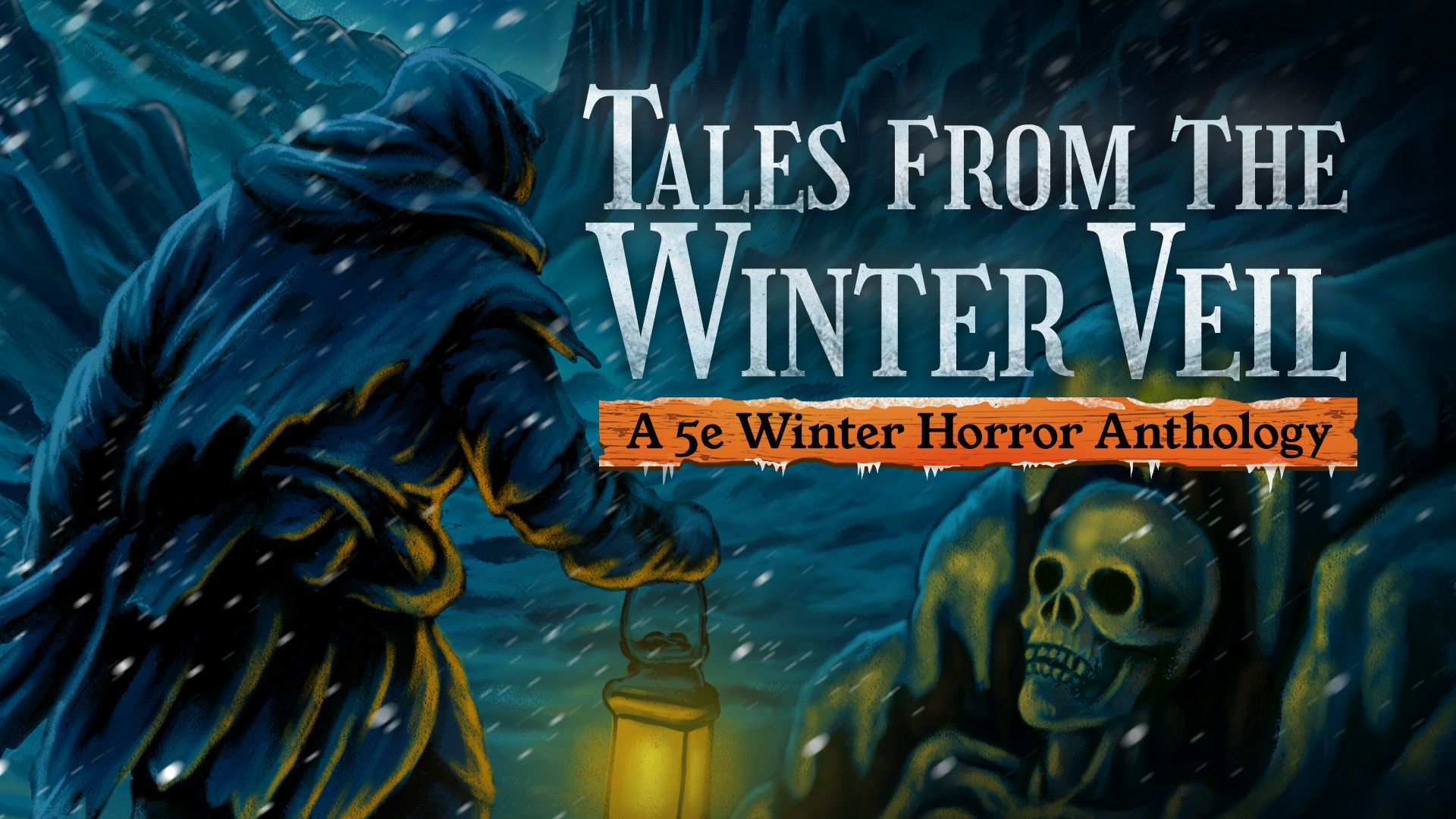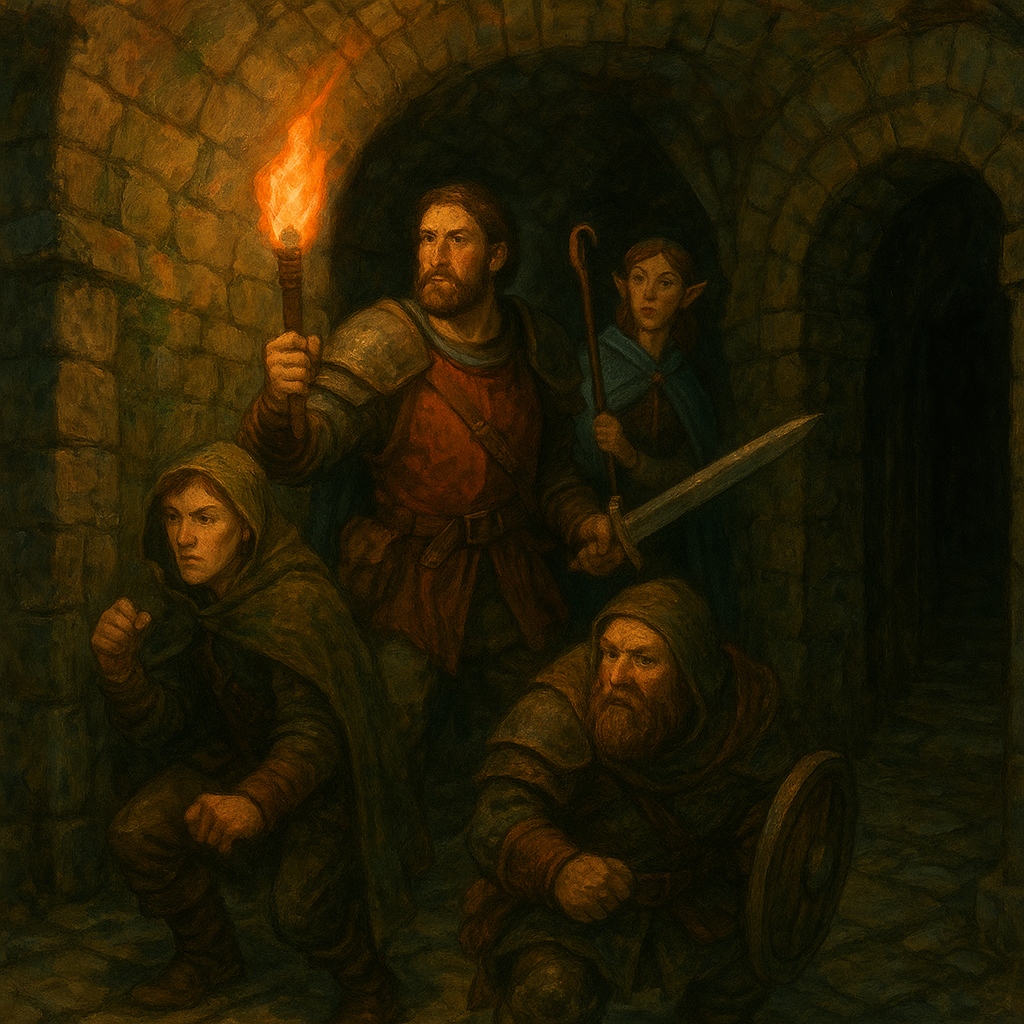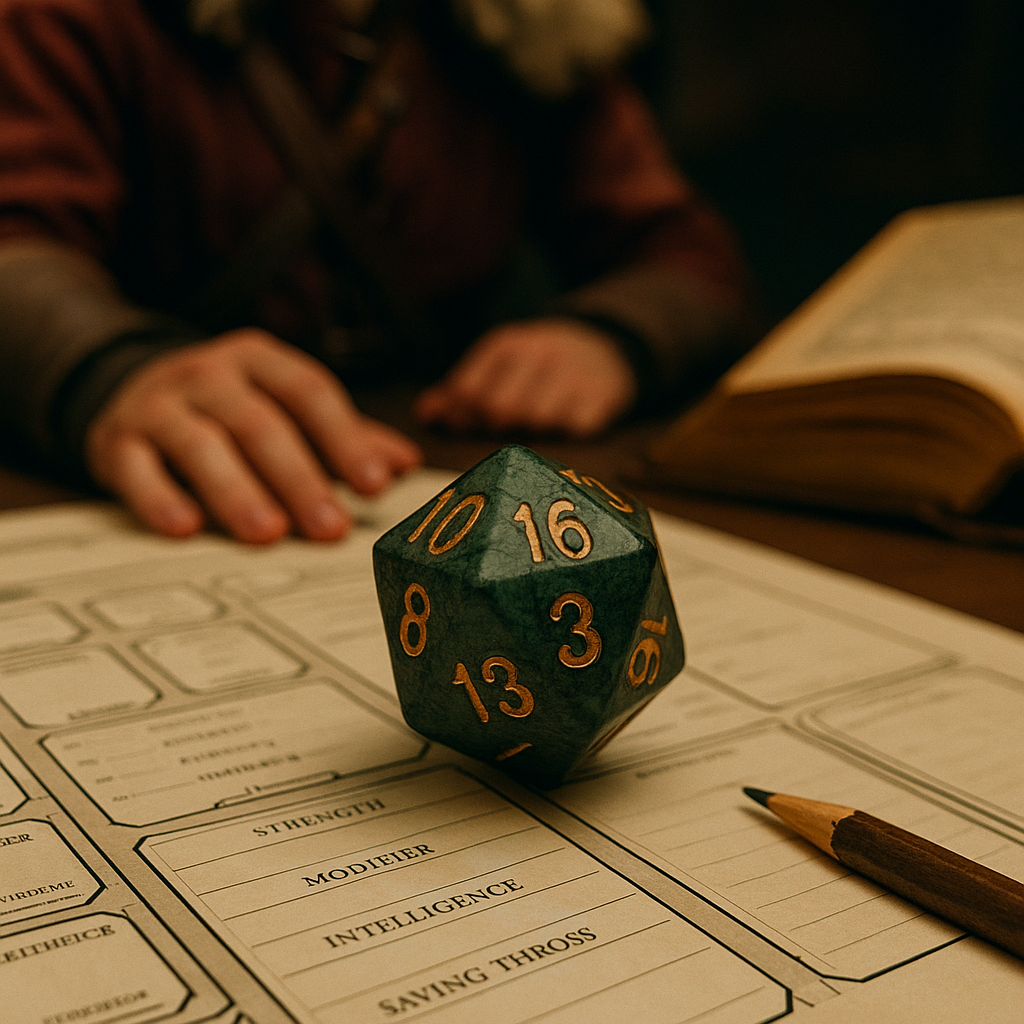Playing With Silence: The Forgotten Power of Nonverbal Roleplay
This is a subtitle for your new post
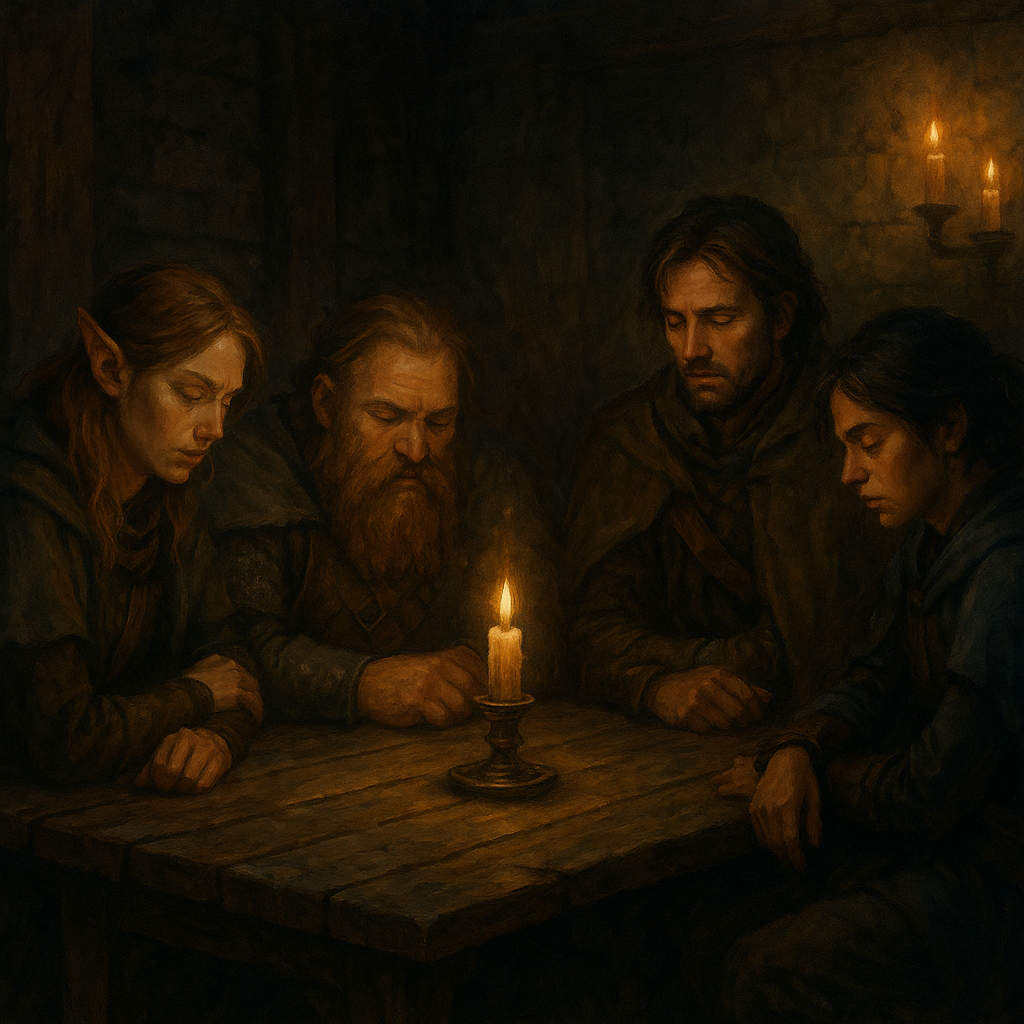
Dear Readers,
The most memorable moments at a Dungeons & Dragons table are rarely the loudest.
They aren’t the booming speeches before battle or the witty banter after victory.
Sometimes, they’re the quiet moments — the single tear on a character’s cheek, the glance shared between rivals, the silence that follows a difficult choice.
In our rush to speak, to act, to fill every gap with sound and certainty, we often forget that silence is also storytelling. A pause can carry more emotion than a paragraph. A look can break a heart more efficiently than a sword.
Today, we’ll talk about how to reclaim that power, how to use quiet, gesture, and nonverbal play to elevate your table from a series of rolls to a shared performance of humanity.
Why Silence Feels Uncomfortable
Modern players are conditioned to equate noise with engagement.
If no one is talking, we assume something’s gone wrong: the game has stalled, the players are bored, or the DM has lost control of pacing. But that assumption comes from fear, not truth.
Silence in roleplay isn’t absence, it’s presence. It’s the moment when emotion catches up to language and finds it wanting. It’s a heartbeat you can feel instead of describe.
Great movies understand this. After a climactic scene, the camera lingers on a character’s face, unspoken thoughts written across it. In theater, an actor’s pause can make an audience lean forward.
At your table, the same is true. The breath before the next word often holds the story’s soul.
The Noise of Most Tables
D&D sessions are noisy by nature: dice clatter, players laugh, music plays. The table hums with energy — which is wonderful. But too much constant noise can drown out subtlety.
Players talk over each other, jump from joke to joke, and rarely let moments land. They skip from one emotion to another like stones skimming across water, never sinking deep enough to feel the current.
When a DM allows silence, even for a few seconds, that rhythm changes. The air grows heavy. The players’ attention sharpens. They realize that the world still exists when no one speaks.
Nonverbal Roleplay as Performance
Nonverbal storytelling turns players into performers. It invites physicality into a game that often lives in imagination.
Think about what your character does when they’re not talking.
Do they pace? Fidget? Fold their arms? Avoid eye contact? Smile only with their mouth?
These details reveal emotion before a word is spoken. The barbarian’s clenched jaw might say more than any speech about vengeance. The cleric’s shaking hands while tending wounds might reveal guilt that dialogue would only cheapen.
You don’t need to act theatrically. You just need to pay attention to body language, both yours and your character’s. Stillness can be louder than speech.
When the DM Uses Silence
Dungeon Masters can weaponize silence too, not through intimidation, but through atmosphere.
Imagine this: the party opens a crypt. Instead of describing the smell of decay immediately, you pause. You look around the table. You let the silence stretch. In that instant, the players fill it with their own imaginations, and fear blooms naturally.
The same works for moral tension. After an NPC says something shocking or painful, don’t respond right away. Let it hang. The players’ discomfort becomes part of the story.
Silence gives the players permission to feel.
Building Tension Without Words
Silence isn’t passive; it’s an active choice. It’s the moment right before something changes.
To build tension, combine silence with sensory detail:
- The dripping of water in a cave.
- The rhythmic breathing of something unseen.
- The slow crack of a floorboard behind them.
These small sounds magnify dread because the players lean in to hear them. The quieter you are, the louder they imagine.
This works just as well for emotional tension. When two characters argue, end the exchange not with a quip but with silence. Let the room feel heavy. Let the dice cool. When the next word finally comes, it will matter.
The Language of Looks
In roleplay, eye contact is dialogue. A look can ask, accuse, or forgive.
Encourage players to describe or physically act out their glances.
- “She stares at you, waiting for an answer.”
- “He looks away before he says anything.”
- “You meet his eyes, and for a second you both remember the first time you fought side by side.”
Moments like these connect players emotionally. They create intimacy that can’t be rolled for. They remind everyone that adventurers are people first and archetypes second.
Shared Silence as Trust
True silence only works when your table trusts each other.
It’s a shared vulnerability, no one breaks the moment because they’re safe enough not to fill it with nervous laughter.
Building that trust takes time. Start with small pauses. End a scene by lowering your voice and saying nothing for a few beats. Let players learn that quiet doesn’t mean awkward; it means alive.
Eventually, your group will stop fearing silence and start craving it. They’ll recognize it as the emotional heartbeat between words.
Using Silence to Mark Change
You can use quiet moments as punctuation marks in your campaign.
After every major turning point; a death, a betrayal, a revelation, stop. Do not rush to the next encounter or skill check. Let the silence sit like an exhale.
That stillness tells your players: “This mattered.”
And when you speak again, your words will land with weight.
Examples from Film and Literature
The best storytellers understand that silence is not absence but emphasis.
In The Lord of the Rings: The Return of the King, after the battle at Minas Tirith, Frodo and Sam lie on the rocks of Mount Doom, saying nothing. Their silence speaks of exhaustion, trauma, and love.
In The Mandalorian, the title character rarely speaks. His pauses and tilts of the head reveal more than dialogue ever could.
Even in tabletop history, games like Call of Cthulhu thrive on silence — the tension between what is known and what is guessed.
These stories work because they let emotion breathe.
The Silence of Grief
When a player character dies, the first instinct at most tables is to talk: to plan resurrection, to calculate loot, to crack jokes to soften the loss. That’s natural. Grief makes us reach for noise.
But if you can, resist. Let the silence fall.
Describe the scene softly. Let the characters (and players) process what has happened.
“The room is still. The torch sputters. The sword slips from your hand, ringing once before it falls silent.”
That soundless space after the last ring is where real mourning lives.
Fear Without Volume
Horror is most powerful when it’s quiet. Screaming monsters are less frightening than the sound of nothing where something should be.
Try running an encounter in near silence. Lower your voice until players lean in. Describe movement in fragments, not full sentences. Let players fill the gaps with imagination.
The mind fears what it cannot fully hear.
The Weight of Witness
Silence can also honor.
When an NPC sacrifices themselves or performs an act of kindness, resist the temptation to narrate over it. Simply describe the moment, then stop.
Your players will instinctively pause, and that pause becomes reverence. The act gains holiness because it’s allowed to echo.
Even in a world of dragons and demons, moments of quiet humanity can feel divine.
The Music of Breath
In music, silence is called “rest.” It is not the absence of sound but part of the composition.
The same applies to storytelling. The rhythm of your sessions depends on contrast: loud and soft, chaos and calm. If you never rest, the song of your campaign becomes noise.
Learn to “conduct” your table. Guide the tempo with your tone, your posture, your pauses. A slow breath before a reveal can be more dramatic than any explosion.
Silence as Consent
In some scenes, silence signals consent or understanding between characters.
Imagine two lovers parting before battle. They share no words, only a look. That silence says, “I know.”
Or two rivals after a duel, one helping the other to their feet. The silence between them says, “Respect.”
Let silence speak agreement where language would ruin the purity of the moment.
Silence as Defiance
Silence can also be rebellion. When a prisoner refuses to answer their captor, when a cleric refuses to pray after losing faith, when a hero watches a tyrant’s speech without response — their silence becomes louder than words.
Encourage players to use quiet as choice. Not every argument needs dialogue. Sometimes the most powerful line is no line at all.
DM Tools for Encouraging Quiet Moments
You can gently teach your players to appreciate stillness.
- Lower Your Own Volume. Speak softer, and the room will follow your rhythm.
- Use Cinematic Descriptions. Treat scenes like film shots: focus on small details, then fade to silence.
- Reward Emotional Engagement. When players pause meaningfully, acknowledge it with in-world reflection — an NPC noticing, the world seeming to hold its breath.
- Music and Soundscapes. Use tracks with moments of stillness or ambient tones that ebb and flow. Sound that breathes invites quiet.
- End on Silence. Instead of saying, “That’s the session,” describe one last image, then stop talking. Let the moment close itself.
Silence in Conflict
Nonverbal play isn’t limited to emotional scenes. It also works during conflict.
Imagine two duelists circling in utter silence, only the scrape of boots and the hiss of drawn blades between them. Or a stealth scene where every sound is dangerous, every breath controlled.
Even describing combat with pauses can heighten impact. Instead of narrating every blow in rapid succession, insert half-second pauses. The rhythm will feel more cinematic, and the hits more personal.
The Role of the DM as Observer
When silence settles, resist the urge to fill it.
The instinct to narrate constantly often comes from anxiety; a fear of losing control. But silence is not control lost; it’s control shared.
Look at your players. If they are thinking, processing, or feeling, you’re doing it right. Trust the silence to do its work.
Players as Poets
Encourage your players to embrace poetic brevity. When describing emotion, fewer words often feel truer.
Instead of saying, “He’s devastated and angry,” a player might say, “He looks at the sword for a long time.” That’s enough.
Encourage each other to speak with restraint. Let imagery replace exposition. The quieter the description, the louder the meaning.
When Silence Becomes Communion
The highest level of play is when everyone at the table feels the same silence together.
You know the moment: dice have stopped, no one breathes, eyes meet. It’s not awkward. It’s holy.
That is storytelling in its purest form. It’s shared understanding without speech.
When your table reaches that moment, you have moved beyond game mechanics into art.
Breaking the Silence Intentionally
Of course, every silence must eventually end. The return to sound is part of the rhythm.
Choose that return carefully. A laugh, a sigh, a single word — all can puncture the tension beautifully.
A long silence after tragedy might end with the rogue whispering, “Let’s go home.”
A silence after fear might end with the paladin saying, “Not today.”
The first sound after silence always carries meaning. Choose it with care.
The Body Speaks Truth
Nonverbal play also applies to physical mannerisms. Encourage players to use gestures or posture that match their characters.
A rogue who always touches their dagger when nervous.
A paladin who kneels before drawing their sword.
A wizard who rubs the ink stains from their fingers when thinking.
These habits become storytelling tools. They make characters feel real even when no words are spoken.
Descriptive Silence
When narrating silence, treat it as an environment. Describe it using texture, temperature, or pressure.
“The silence feels heavy, like the air itself is watching.”
“The quiet rings in your ears as if the world is holding its breath.”
“You can hear your heartbeat louder than the wind.”
Silence becomes something tangible that players can feel.
When Players Resist
Some groups are uncomfortable with quiet. That’s natural. They may joke or break tension to avoid vulnerability.
Don’t punish that. Just keep modeling stillness. Eventually, they’ll see its value.
If the table is especially talkative, introduce NPCs who communicate mostly through gesture or written words. The players will learn to slow down to match the pace.
The Silent NPC
A mute or stoic character can teach the group how to listen differently.
Imagine an ancient monk who answers every question with a drawn symbol in the sand, or a ghost who can only nod or weep.
These interactions train players to interpret meaning through observation instead of dialogue.
Silence in NPCs also creates mystique. When everyone talks constantly, the one who doesn’t becomes unforgettable.
The Power of Partial Silence
Not every scene needs full quiet. Partial silence — a single player speaking while others stay silent — can be just as moving.
When one voice breaks through the hush, the moment feels fragile and sincere. It’s the emotional equivalent of a candle in darkness.
Encourage this by lowering your voice when narrating, inviting others to follow suit.
The Art of Listening
True nonverbal play begins with listening.
Listen not just to what players say but how they say it. Notice hesitations, tone, breath. These are emotional cues.
If someone pauses mid-sentence, let the silence stretch. Maybe their character is unsure. Maybe the words hurt. Let the gap become part of the story.
Silence as Healing
After trauma or conflict, silence can serve as recovery.
A group sitting together in shared quiet after surviving something terrible can communicate more comfort than any speech.
Describe this gently:
“You sit together under the fading light. No one speaks, but you all know that you are still here.”
Moments like this let players breathe with their characters.
The Minimalist Scene
Try running a full scene with as few words as possible. Challenge your players to describe emotion and intent through action, not dialogue.
A reunion where two characters embrace but never speak.
A farewell marked only by a nod.
A victory celebrated with clasped hands instead of cheers.
The restraint will feel powerful because it contrasts with how most sessions sound.
The Return of Sound
When silence breaks, make it meaningful. The return to words should feel earned.
The bard begins to hum a tune. The ranger says, “It’s over.” The wind returns. These sounds mark rebirth.
Silence and sound are not enemies. They are partners. Together, they create rhythm.
Practical Exercises for the Table
- The One-Minute Scene: Run a moment where no one speaks for sixty real seconds. Let the players act or react without dialogue.
- The Silent NPC: Introduce a character who cannot speak but must still communicate.
- Describe Without Words: Have players write short notes or gestures instead of speaking during key scenes.
- The Pause Rule: After any major revelation, count to five silently before anyone responds.
- End with Quiet: Conclude a session on an image, not a speech. Let the players imagine the sound.
Why It Matters
D&D is not about dice or rules; it’s about people trying to understand each other through story.
Silence gives that understanding room to grow. It makes space for empathy.
The quiet between words is where connection hides. It’s where fantasy meets truth.
Final Reflection
Your table is a symphony of laughter, chaos, and imagination. But every symphony needs its rests.
When you let silence live in your story, you remind everyone that fantasy is not about noise — it’s about meaning.
So, the next time your players fall quiet, don’t rush to fill it.
Look around the table. Feel that stillness.
That’s not awkwardness. That’s art.
Until next time, Dear Readers…















